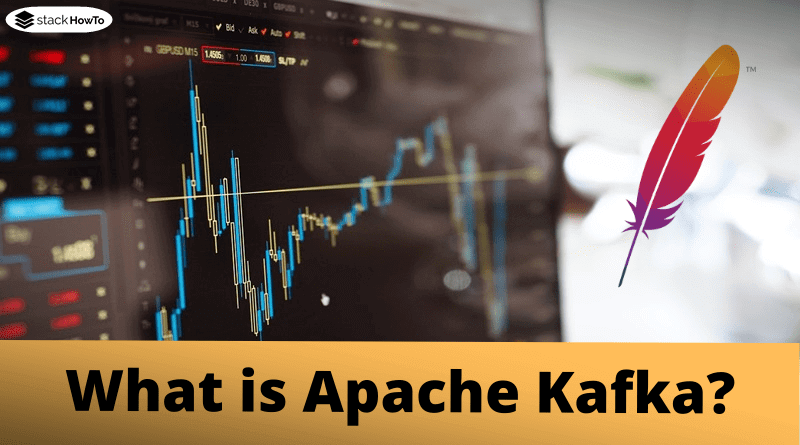What is Apache Kafka?
Apache Kafka is an open-source platform for stream processing. The software was originally developed by LinkedIn and written in the Scala and Java programming languages. In 2011, Kafka became part of the Apache project. The aim of the project is to provide a unified platform with high throughput and low latency for processing real-time data feeds. Kafka can connect to external systems and Kafka Streams offers stream processing in Java.
What is Apache Kafka?
Kafka is widely used in real-time streaming data architectures to provide real-time analytics. According to the developer, the software was named after the author Franz Kafka because it represents a system optimized for writing. The software provides three main functions to users:
- Publication and subscription to data streams
- Effective storage of data streams
- Processing streams in real-time
As the software is a fast, scalable, and fault-tolerant publish-subscribe messaging system, Kafka is used in use cases where the message systems JMS – Java Message Service, RabbitMQ, and AMQP may not be considered due to the volume and responsiveness. Kafka offers higher throughput and reliability properties and is therefore suitable for high data volumes with which conventional Message Oriented Middleware (MOM) may be overwhelmed.
Some important Kafka concepts:
Manufacturer
Manufacturers are applications that publish a data stream on one or more Kafka topics.
Consumer
Consumers are the applications that read data from Kafka topics.
Kafka Broker
Kafka’s servers are called brokers. They store data provided by the manufacturer and make them available to the consumer. Kafka brokers require an Apache Zookeeper deployment to store configuration data, topic offsets, consumer groups, and other information.
Kafka replicates its logs across multiple servers for fault tolerance. Every Kafka broker has a unique ID (number). Kafka Brokers contain topic log partitions.
Kafka theme and partition
The topic is a data stream that consists of individual data sets and is basically just a pre-written protocol. The producer appends records to these logs and the consumer subscribes to changes. Kafka topics are divided into several partitions in which a topic can be parallelized by dividing the data in a certain topic among several brokers. Each partition can be placed on a separate computer so that multiple users can read from a topic at the same time. In addition, a topic can contain more data than can fit on one hard drive.
Kafka cluster
Apache Kafka consists of a number of brokers that run on individual servers and are coordinated by Apache Zookeeper. Users can create a single broker initially and add more as they scale their data collection architecture. A Kafka cluster can have 10.100, or 1000 brokers in a cluster if necessary. Kafka uses Apache Zookeeper to maintain and coordinate the Apache Kafka brokers.
Kafka Connect
Connect is a tool that enables scalable and reliable streaming of data between Apache Kafka and other systems. Kafka Connect is an API that allows Kafka to be easily integrated with other systems without developers having to write additional code.
For which areas of application are the software intended?
Kafka can work with Flume and Flafka, Spark Streaming, Storm, Hbase, Spark, and other software to ingest, analyze and process streaming data in real-time. Kafka brokers support massive streams of messages for follow-up analysis with low latency. Kafka Streaming (a sub-project) can be used for real-time analysis.
How does Kafka work: the basic functions
Apache Kafka is based on the commit data protocol and allows users to subscribe to a service and publish data to any number of systems or real-time applications.
Example applications are managing passenger and driver reconciliation at Uber, or providing real-time analysis and predictive maintenance of a smart home at other companies. Meanwhile, Kafka is widely used by many organizations around the world including Netflix, Twitter, Spotify. The software system has a strong, lively, and open community and is compatible with a variety of complementary technologies.
Properties and particularities of Kafka: Structure and Architecture
Kafka is easy to use. The system must be set up and used. Users can quickly see how Kafka works. The main reason Kafka is so popular is because of his great performance. Other features are: Kafka is stable, offers great reliability, and has a flexible publish-subscribe function that adapts to the number of consumer groups.
In addition, the software works well with systems that have data streams to be processed and allows those systems to aggregate, transform, and load into other systems.
In operation, Kafka relies heavily on the operating system kernel to transfer data quickly. With Kafka, records can be stacked in blocks. These data stacks are continuously displayed for the consumer from the producer to the file system (Kafka Topic Log).
Batch processing allows data to be compressed more efficiently, thereby reducing I/O latency. This way, a slow search is avoided. This enables the system to deal with massive loads.
Kafka is most commonly used for real-time streaming of data to other systems. Kafka Core is not suitable for direct calculations such as data aggregations or CEP. However, Kafka Streaming, which is part of the Kafka ecosystem, offers the ability to conduct real-time analytics. Kafka can be used to feed fast lane systems (real-time and operational data systems) such as Storm, Flink, Spark Streaming.
Kafka transfers data for future data analysis on the BigData platform or in RDBMS, Cassandra, Spark, or even S3. These data stores often support data analysis, reporting, data science crunching, compliance checking, and backups.
How do I use Kafka in the cloud?
With Amazon Managed Streaming for Apache Kafka (Amazon MSK) and the Microsoft Azure portal, companies looking to use the popular open-source distributed streaming platform can set up, scale, and manage Kafka clusters for big data. Simplify processing.
To use Apache Kafka, companies have to install the software themselves and make it available on a server. This also includes the manual configuration of Kafka and a failover server, as well as server patches. Users have to align the cluster for high availability and ensure that the data is permanently stored and secured. This includes setting up and monitoring the alarms and carefully planning scaling events to support load changes.
What interfaces are there?
Kafka Connect (or Connect API) is a framework for importing and exporting data from or to other systems. It was added in version Kafka 0.9.0.0 and internally uses the producer and consumer API. The Connect framework itself executes so-called connectors that implement the actual logic for reading and writing data from other systems. The Connect API defines the programming interface that must be implemented to create a custom connector. Many open source and commercial connectors for popular data systems are already available. However, Apache Kafka itself does not yet contain any connectors ready for series production.
Kafka Streams (or Streams API) is a stream processing library written in Java. It was added in version Kafka 0.10.0.0. The library enables stream applications to be developed that are scalable, elastic, and completely fault-tolerant. The main API is a Domain Specific Language (DSL) for stream processing that provides high-level operators such as filtering, mapping, grouping, aggregation, and joining.
In addition, the Processor API can be used to implement custom operators for an easier development approach. The DSL and Processor API can also be used together. For stream processing, Kafka Streams uses RocksDB to maintain the local state.
Since RocksDB can write to disk, the retained state can be larger than the available main memory. For fault tolerance, all updates in local state stores are also written to a Kafka cluster. In this way, users can recover the state by reading this data into RocksDB.





